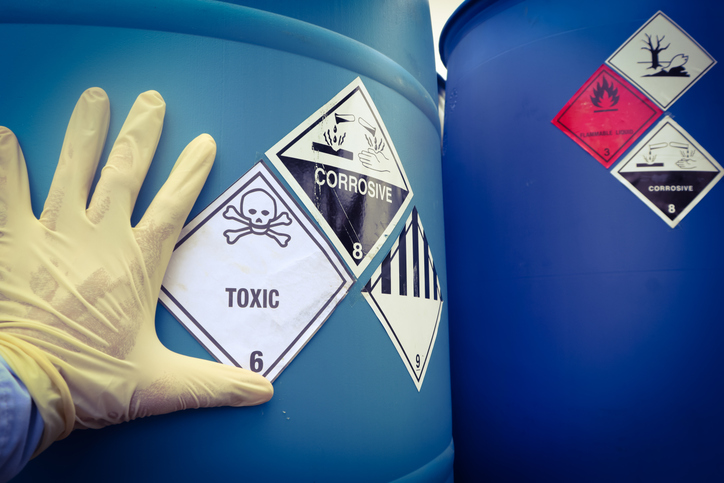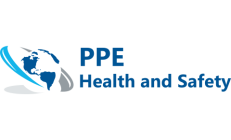You might wonder why it’s essential to classify hazards. Have you ever considered that the world around you is filled with potential dangers? You can practically find hazards anywhere. However, there is a way of managing them effectively by having classifications for them. Hazard classification involves identifying, categorizing, and evaluating potential dangers to safeguard health, safety, and the environment. It’s an integral part of risk management and crucial to ensuring workplace safety. Find out everything you need to know about classifying hazards and their role in conducting hazardous materials assessments here.
Understanding Hazardous Materials 101
Hazardous materials, often called ‘HazMat,’ potentially risk health, safety, property, or the environment. They can be found in various forms, including solids, liquids, gases, or a combination. You encounter hazardous materials daily, even in your own home. Cleaning products, batteries, paint, and pesticides are all hazardous materials.
Hazardous materials, like poisonous plants or certain types of bacteria, can naturally occur. They can also be man-made, including industrial chemicals and waste products. The potential hazards associated with these materials depend on their properties, how they’re used, and how they’re managed.
In the workplace, hazardous materials are found in many different sectors and jobs. For example, construction workers might be exposed to asbestos, painters to volatile organic compounds, and healthcare workers to biohazardous materials like bloodborne pathogens. Understanding hazardous materials’ properties and potential hazards is the first step in hazard classification.
Types of Hazards
Hazards come in different shapes and sizes. They can be classified into four main types: physical, chemical, biological, and ergonomic. Physical hazards are environmental conditions or factors that can harm your body without necessarily touching it. These include radiation, extreme temperatures, noise, or vibration.
Chemical hazards are substances that can cause harm or discomfort to your body. These can be solids, liquids, or gases and can harm you through inhalation, ingestion, or skin contact. Examples include toxic substances, irritants, or carcinogens.
Biological hazards are living organisms or the products of these organisms that can cause harm to human health. These include bacteria, viruses, fungi, and other microorganisms.
Lastly, ergonomic hazards are physical factors in the work environment that can harm musculoskeletal health. These include improper workstations, repetitive movements, and poor body mechanics.
The Importance of Hazardous Material Assessments
Hazardous materials assessments aim to identify and evaluate the risks associated with hazardous materials. These assessments are crucial in preventing accidents and illnesses, ensuring employee safety, protecting the environment, and complying with legal and regulatory requirements.
Hazardous materials assessments are also integral to the process of hazard classification. They provide the information needed to categorize hazards and determine the appropriate controls to manage them. Furthermore, these assessments are vital in developing safety training programs and emergency response plans.
Steps in Conducting Hazardous Material Assessments
Conducting a hazardous materials assessment involves several steps. Firstly, you need to identify the hazardous materials present in your environment. This step involves examining product labels, safety data sheets, and other sources of information.
The next step is to evaluate the risks associated with these materials. These involve considering factors like the material’s toxicity, the amount present, the route of exposure, and the duration of exposure.
Finally, you need to determine the appropriate controls to manage these risks. It may involve implementing engineering controls, administrative controls, or personal protective equipment.
Tools & Techniques for Hazard Classification
Various tools and techniques can be used for hazard classification. These include risk matrices, decision trees, and software tools. These tools help to categorize hazards based on their severity and likelihood. They also help prioritize hazards, which is essential in allocating resources for hazard control.
Case Study: Real-World Examples of Hazard Classification
Let’s look at a real-world example of hazard classification. A chemical manufacturing plant uses a hazard classification process to identify and evaluate the risks associated with various chemicals used in production. This process involved reviewing safety data sheets, conducting risk assessments, and implementing appropriate controls. As a result, the company was able to prevent accidents, protect employee health, and comply with regulatory requirements.
Training & Certification for Hazard Classification
Training and certification in hazard classification are available and highly recommended for those managing hazardous materials. These programs provide the knowledge and skills to identify, classify, and control hazards effectively. They also cover essential topics like regulatory requirements, safety data sheet interpretation, and emergency response.
Legal & Regulatory Aspects of Hazard Classification
Hazard classification’s legal and regulatory aspects are complex and vary by jurisdiction. In many countries, some specific laws and regulations govern the classification of hazards and the management of hazardous materials. Non-compliance with these regulations can result in penalties, legal action, and damage to a company’s reputation.
Hazard classification is a complex but vital process in managing hazards associated with hazardous materials. It involves identifying, categorizing, and evaluating hazards and is integral to ensuring safety, health, and environmental protection. Conducting hazardous materials assessments, using appropriate tools and techniques for hazard classification, and understanding this process’s legal and regulatory aspects are important. Training and certification in hazard classification can also be beneficial. So, start your journey in hazard classification today, and take a proactive step towards a safer environment.

